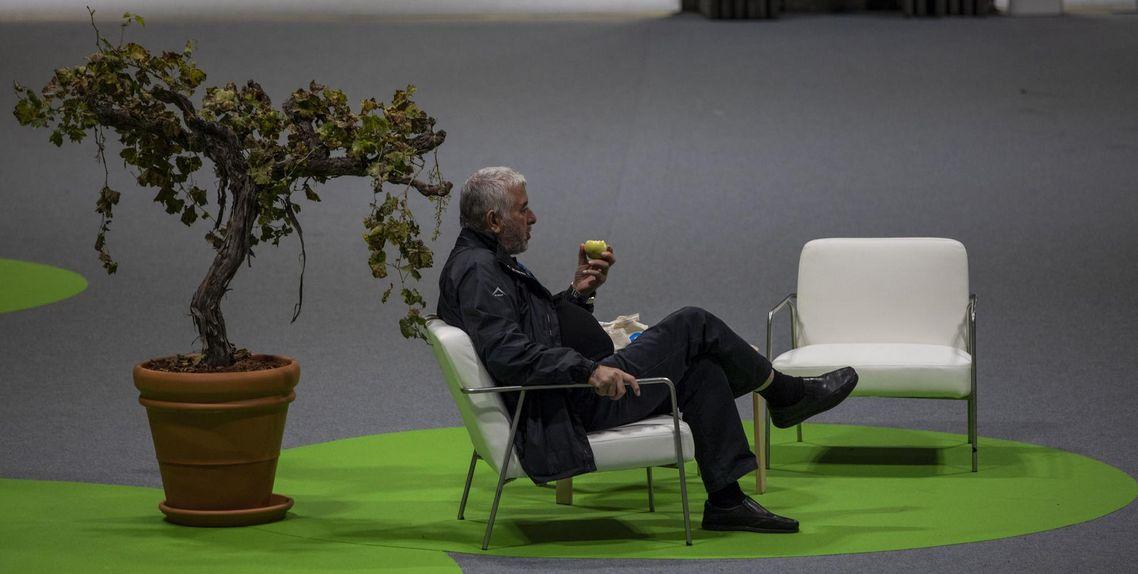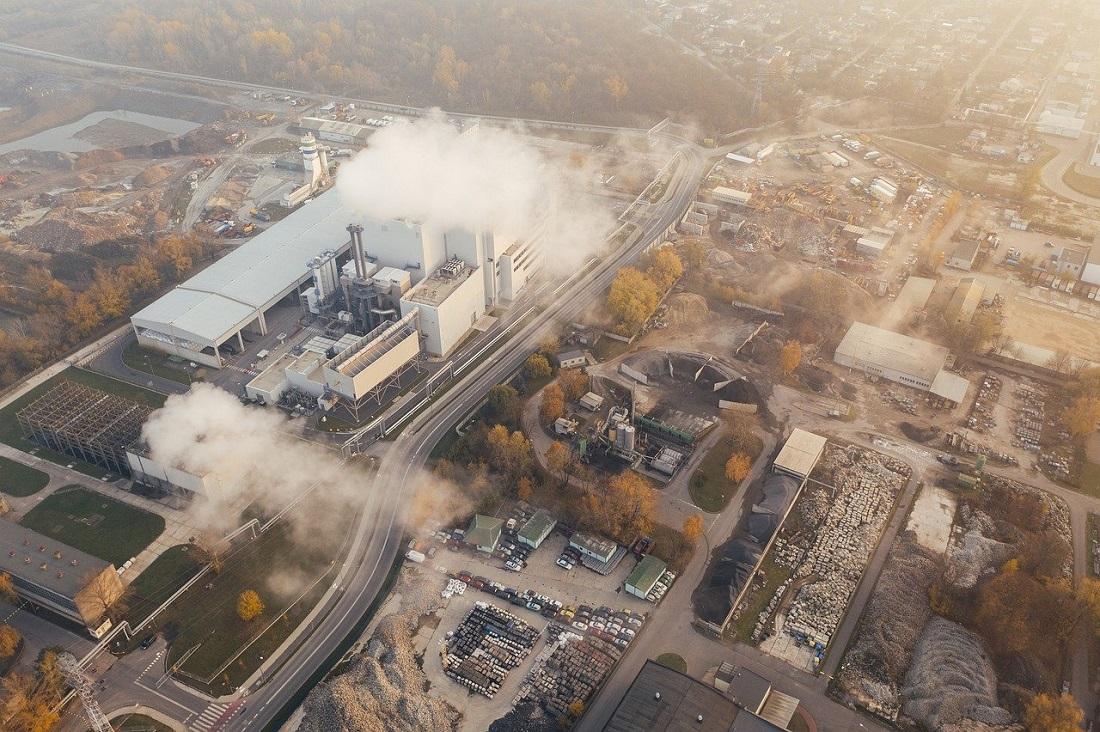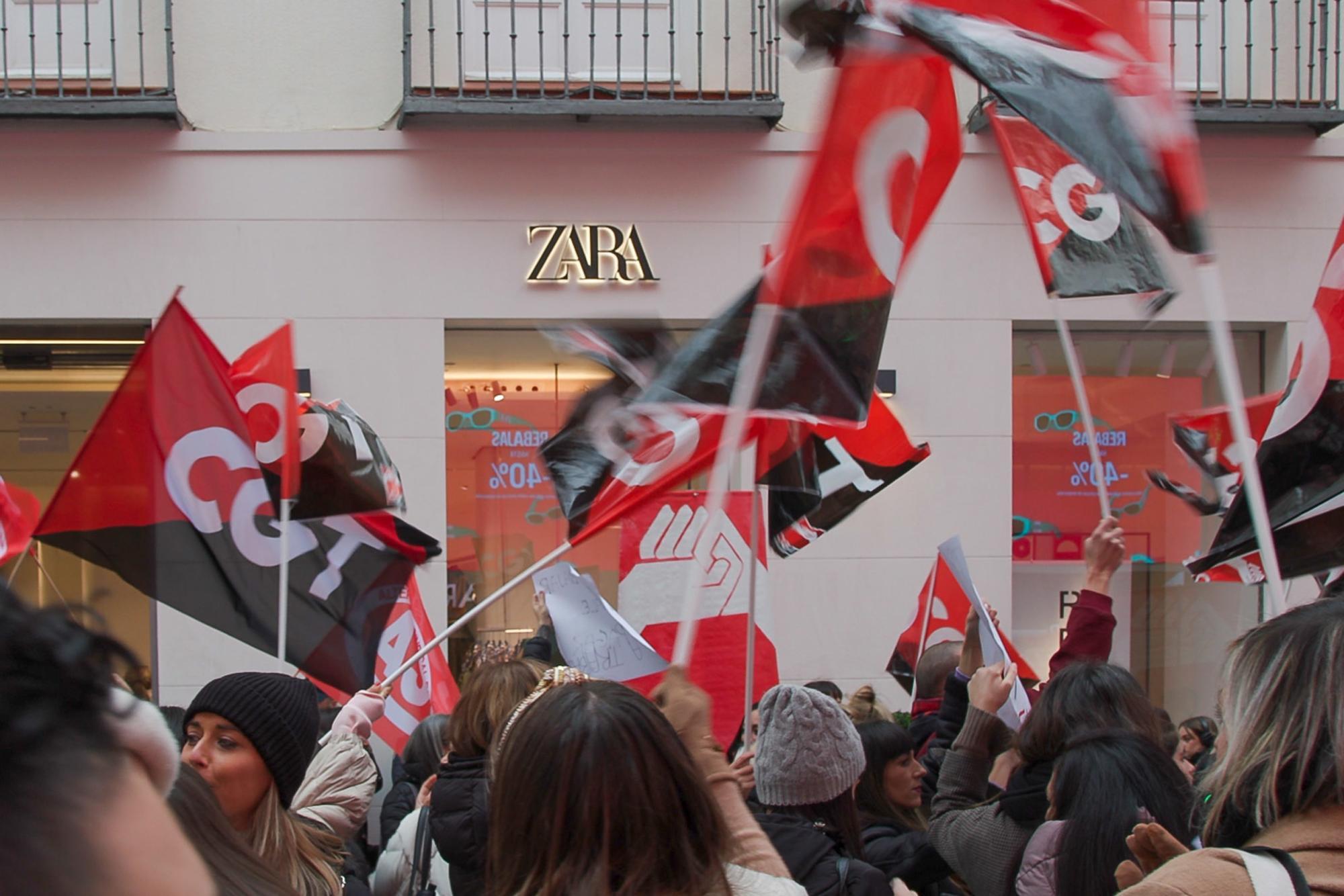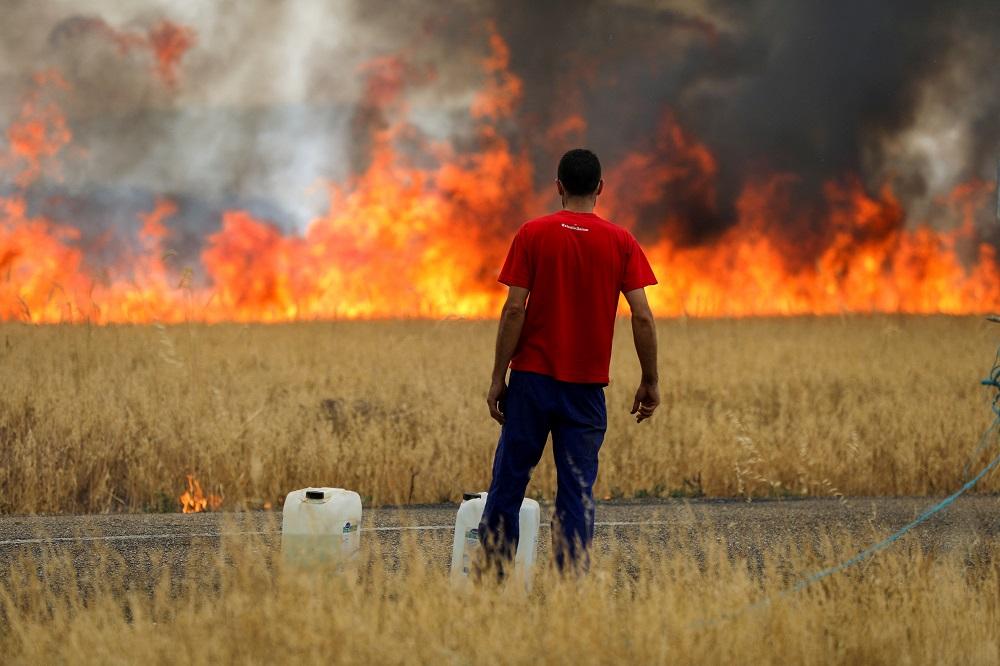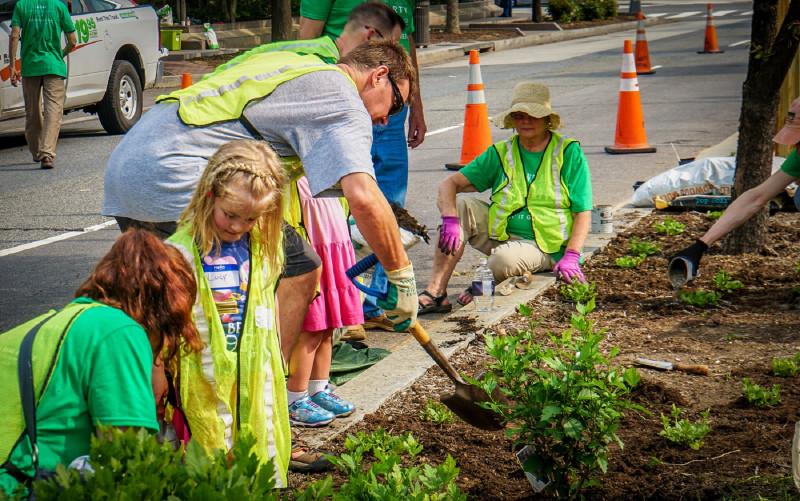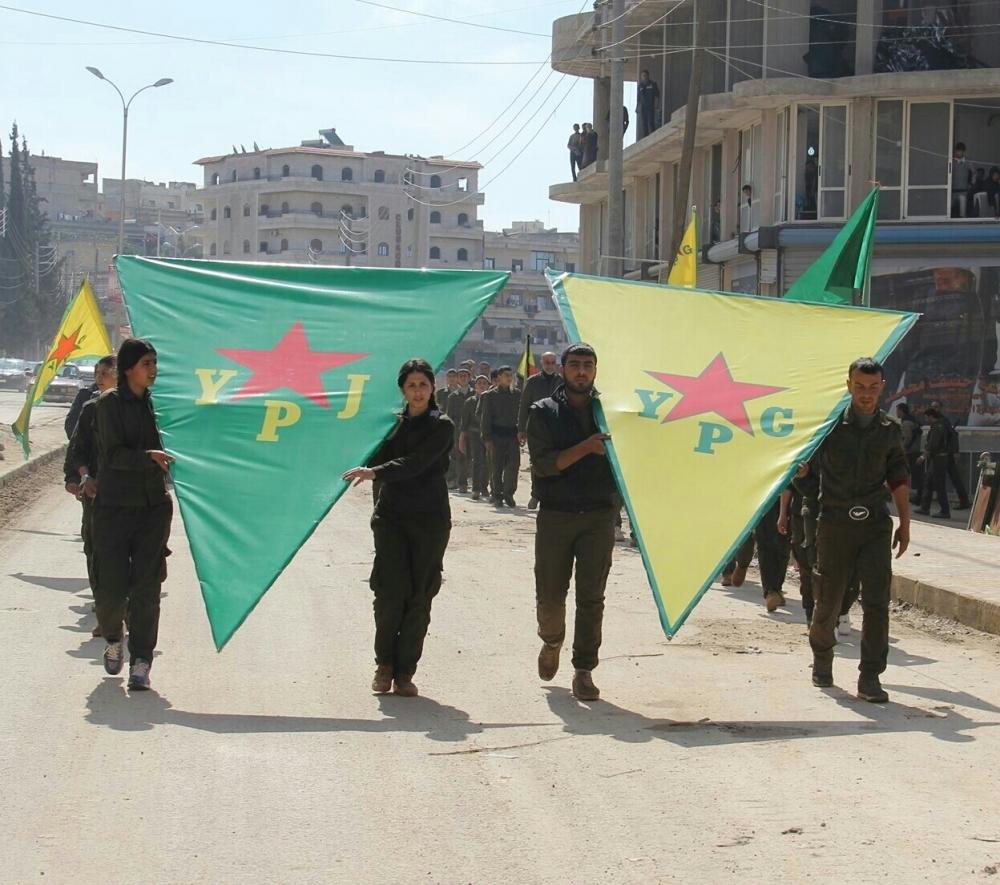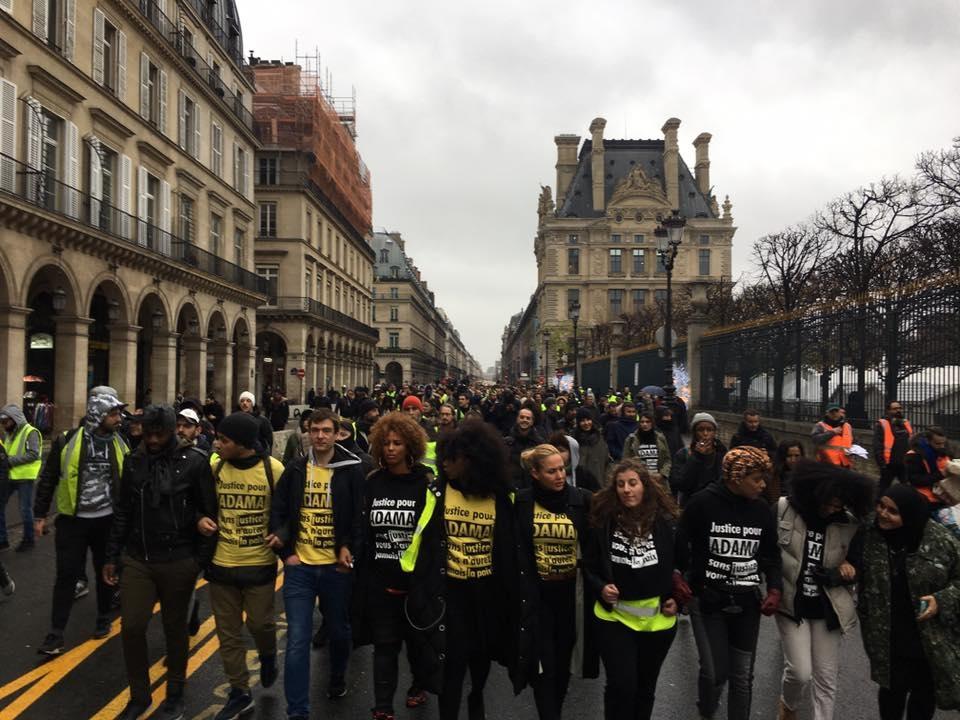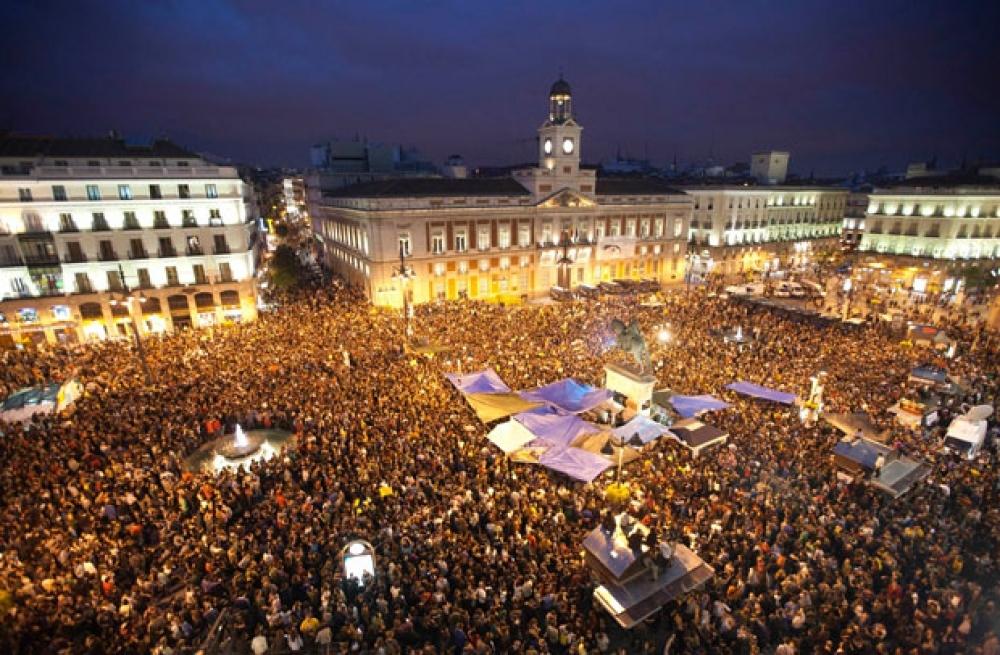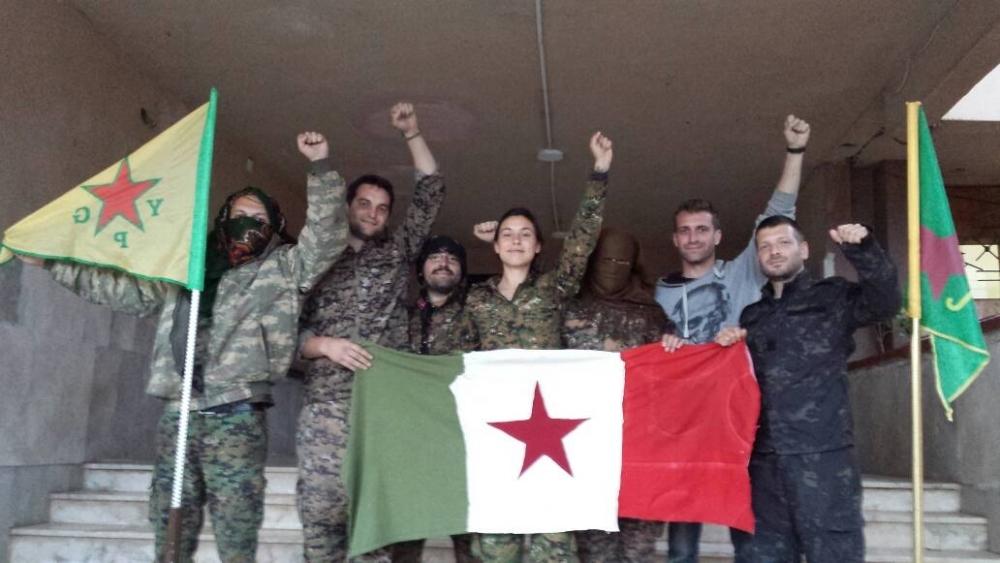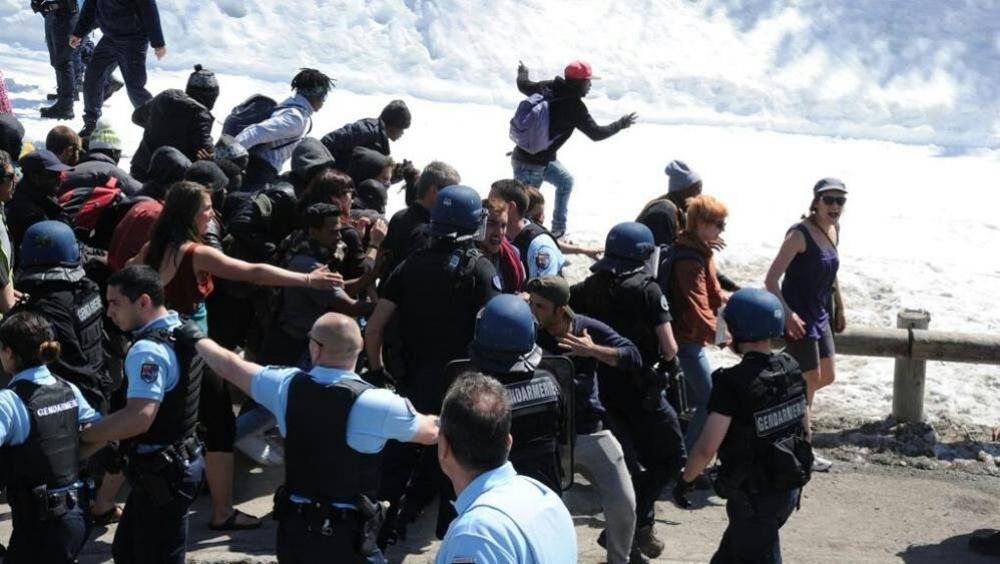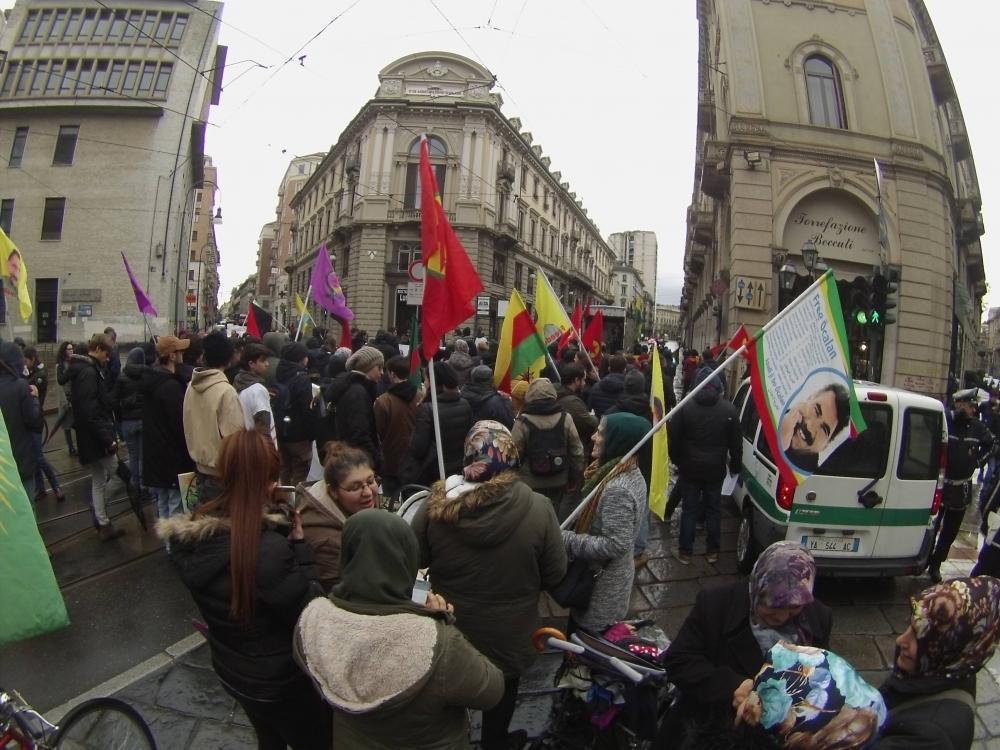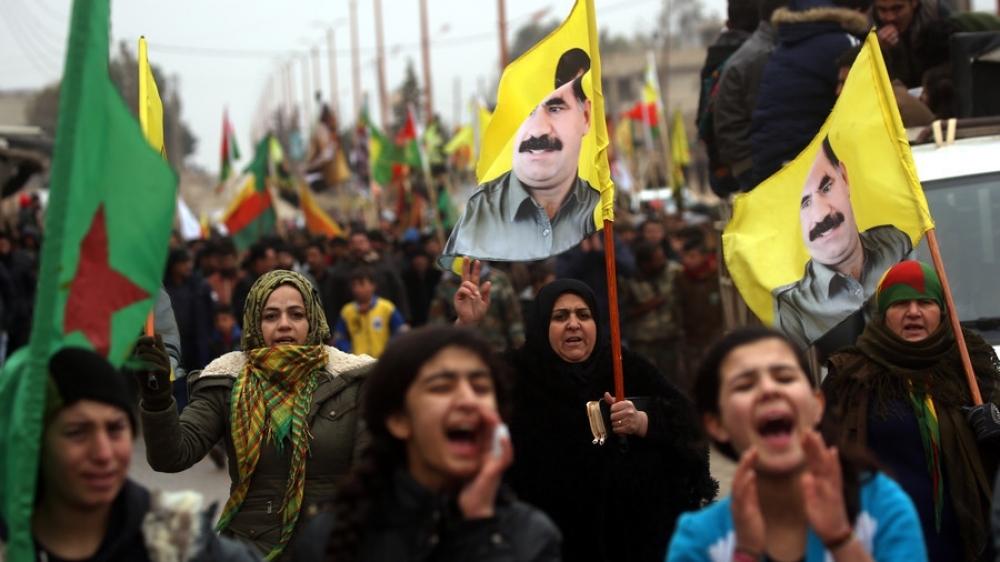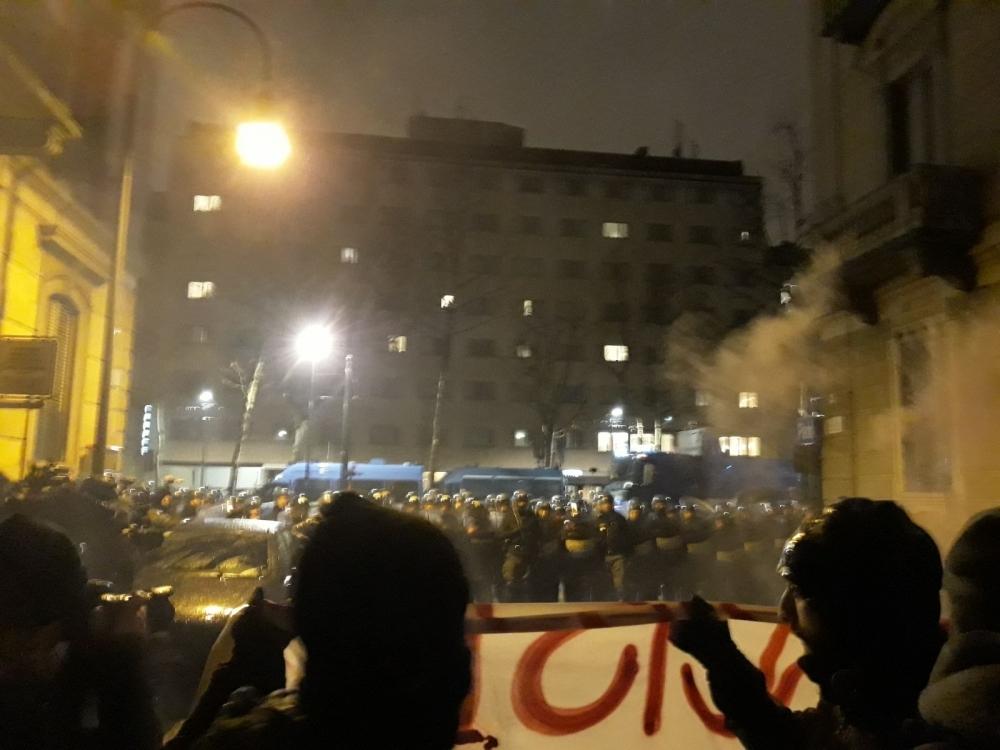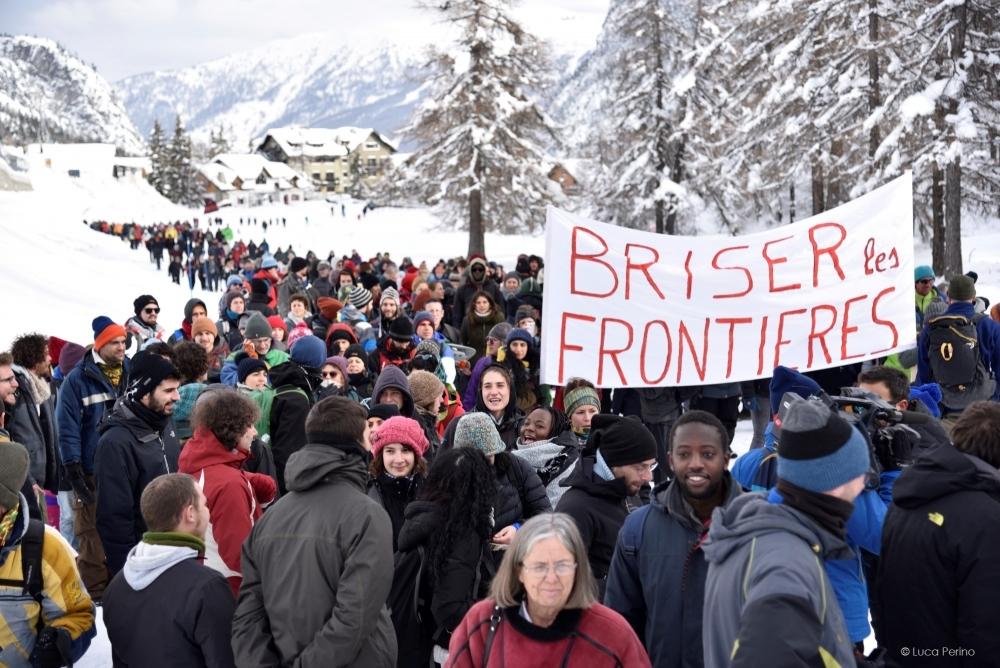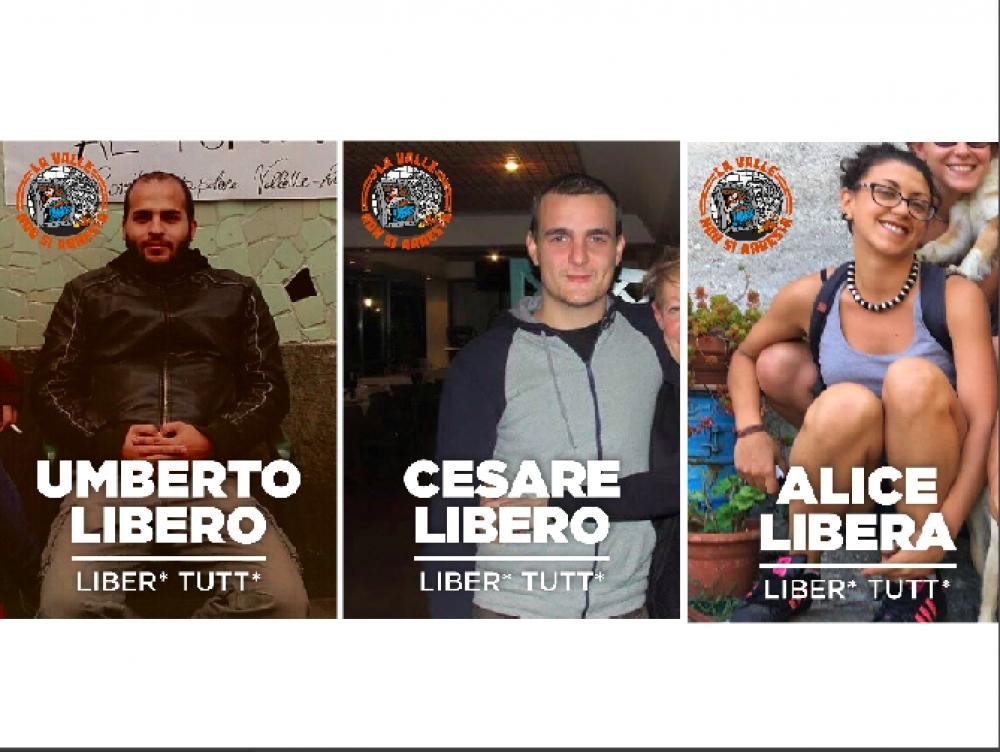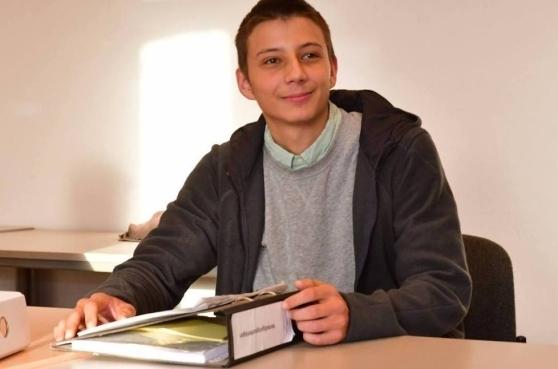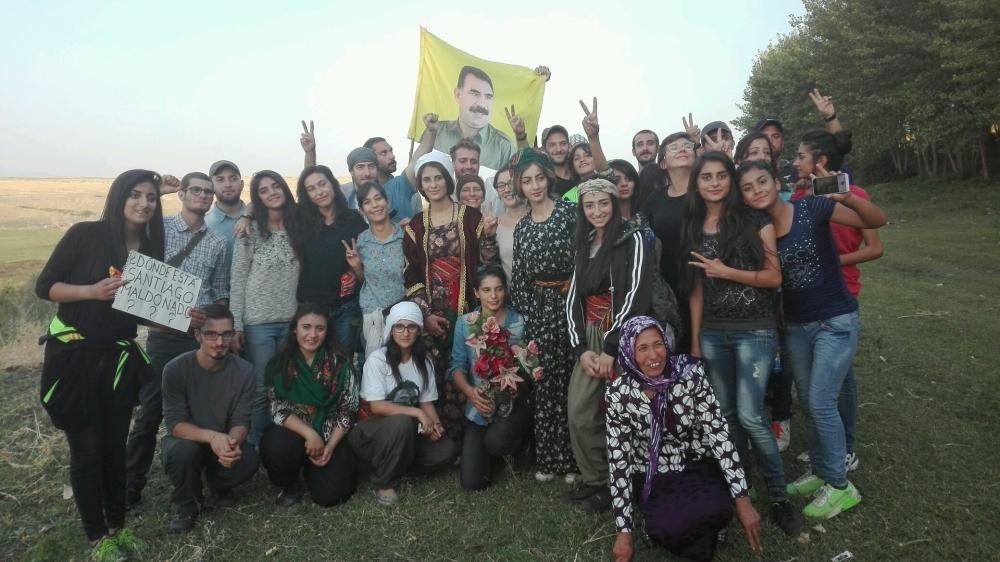
It all started with a siege – What happened in Italy on the 18th and 19th of October
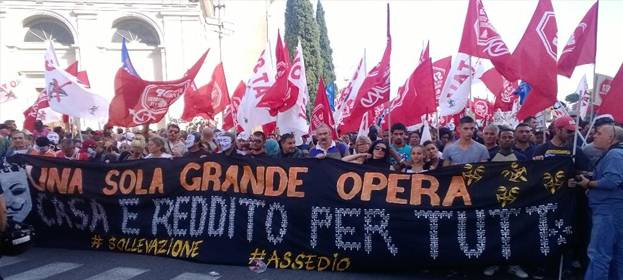
Some two months ago the national housing activists met the NO TAV* movement in the sunny green Susa Valley. The plan was a week of national mobilization culminating with a general strike (of the rank-and-file unions) followed by a mass demonstration against austerity and precarity in Rome. Putting together the whole Italian movement sounded like wishful thinking. No one could imagine what was going to happen.
Weeks of hard work and national coordination followed. Bit by bit the 19th October general uprising was taking shape. The week before was marked by numerous appropriation events: from empty buildings being squatted by students to families sieging shopping centers for food at fair prices.
What happened on the 18-19th October?
On the 18th of October 50 000 workers of the rank-and-file unions struck all over Italy. The capital’s transportation was blocked. Demonstrators filled the Roman streets, demanding for a national employment plan and the abolition of precarious labour and immigration laws. They camped in the San Giovanni Square, where a night of concerts took place, in a mobilizing atmosphere of calm before the storm.
In fact, as soon as # 19O and #siege hashtags had been launched, the press put up a sustained “tension strategy”, announcing Rome’s invasion by the violent NO TAVs (currently substituting the old “black bloc” scare crow). This happening in a country haunted by the G8’s 2001 Genova police brutality and the late 15th of October 2011 riots.
If paranoid media did have any impact, it wasn’t on the 70.000 that took the streets of Rome on the morning of the 19th of October.
The rally was led by the Italian and migrant squatting families carrying a banner of the 19O common demand: “One only massive construction: income and housing for everybody!”, meaning to redirect the huge funds granted to the massive events and construction sites (such as the TAV, the Sicilian MUOS military base, the 2015 Expo in Milan) towards the housing emergency (7000 evictions in Rome only) and the citizenship income. “Stop evictions” red flags were everywhere, together with the NO TAV, NO MUOS, public water ones and the inevitable Fawkes masks.
A new migrant protester arose at the 19O demonstration. Some of them “contaminated” by activism in the squatted housing movements all over Italy that embraced and defended all those evicted families, persecuted Roma communities and refugees, marginalized by the collective impoverishment measures or escaped for their lives from conflicts all over Africa and the Middle East, that western powers are currently funding or gaining from.
After the latest tragedy of 366 people drowning in the Lampedusa Bay on the 3rd of October, the government thought to grant them hypocrite post mortem Italian citizenships, while innumerable refugees and economic migrants are constantly fighting against misery and racism. Some wore banners excusing themselves for “not having drowned” and the rally was firm in demanding immediate abolition of the racist Bossi-Fini immigration law and granting full citizenship to (alive) refugees and migrants.
Porta Pia hibridation
After the one hour siege of the Economy Ministry, violent charges and the arrest of 6 activists, the march kept flowing. It ended in front of Michelangelo’s mannerist Porta Pia, where secular forces had defeated the Catholic Church’s troops in the 19th century, that was chosen because located near to the Ministry of Infrastructures and Transportation, targeted by the rally’s demands.
Spoilt by the autumn sun, the demonstrators occupied the lawn in front of Porta Pia with their colorful tents, quickly organizing the media-center and the canteen. No rhetoric speeches ended the rally, because there was nothing to be ended. The 19O gathering is rooted in the collective immediate needs to which struggle is the only possible answer. 19O was only an occasion to publicly give voice to all those subjects that had experienced the inconsistency of representative democracy and are constantly devoured by the crisis’ ferocious rush to polarize wealth: housing squatters, territory defense movements, migrants, refugees and unemployed youth (40% in Italy). Their most dangerous weapons are self-management and solidarity. They’re currently under the austerity’s attack and never resign to the state’s deafness because it’s they’re most immediate needs that push them to struggle for survival.
A new movement rooted in the single survival problems of unrepresented subjects took the streets on the 19th of October.
No friend government
The day after, a delegation was granted a meeting with the Infrastructures and Transports’ minister and the mayor of Rome, who provided the expected rejection of the 19O leading demand: immediate block of all evictions as an answer to the housing emergency. “Politics has once again proven total distance from the people’s needs” explained Paolo di Vetta of the Precarious Metropolitan Blocks. Right after the meeting, as democratic mayor Marino sought some electoral catwalk among the homeless people camping in Porta Pia, he was strongly encouraged to leave with “No one represents us!” choirs. “We thank the mayor for his presence, but this is our assembly. We have no friend government”, concluded Luca Fagiano of the Urban Organization for Housing Struggle.
After the end of the camping, considered an insufficient answer to the government’s apathy, the struggle will spread from Porta Pia to Florence and back in Rome, calling for rallies on two dates later this month, in occasion of the authorities’ meetings on local and housing issues.
The strength of this multiplicity of movements is that no one really expects the government to answer those demands. The different struggles provide their own answers and results and continue transforming and enriching their communities. The coalition government’s deafness is only the repeated symptom of a rotten structure kept alive by interests that simply do not include who took the streets that day.
Against the common rhetoric junk-politics of the existing bipolarism or populism, the 19O demonstration pushed forward a new political subject, already a transformation agent in its local expressions, but also able to overcome territorialism and engage in a national experiment. All the movements involved that day nourish a great sense of responsibility for Italy’s future political alternative, that’s why they’re worth being monitored.
di Oana Parvan
*Movement against the building of high speed railway (with exorbitant public and environmental costs) between Turin and Lyon, located in the Susa Valley. Started back in the ’90 and is now violently under attack, as it struggles to sabotage the construction site. Has become the Italian movement’s symbol of public resources’ waste and commodification of the common wealth. The NO TAV cause in the Susa Valley, by some called ‘the university of the struggle’ is probably one of the most violently repressed one in Italy. It has, thus, built, an incredible determination and cohesion with the rest of the country.
Ti è piaciuto questo articolo? Infoaut è un network indipendente che si basa sul lavoro volontario e militante di molte persone. Puoi darci una mano diffondendo i nostri articoli, approfondimenti e reportage ad un pubblico il più vasto possibile e supportarci iscrivendoti al nostro canale telegram, o seguendo le nostre pagine social di facebook, instagram e youtube.



